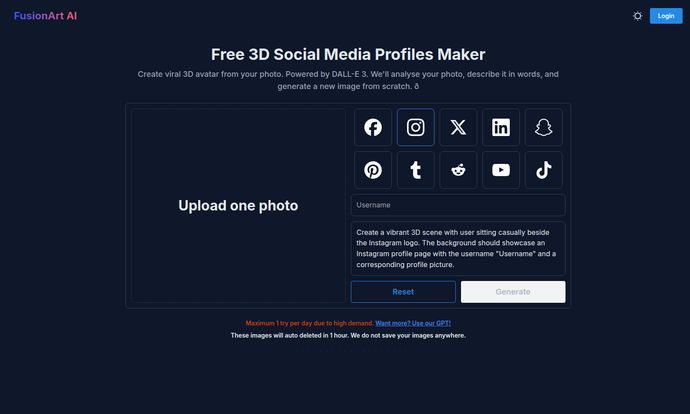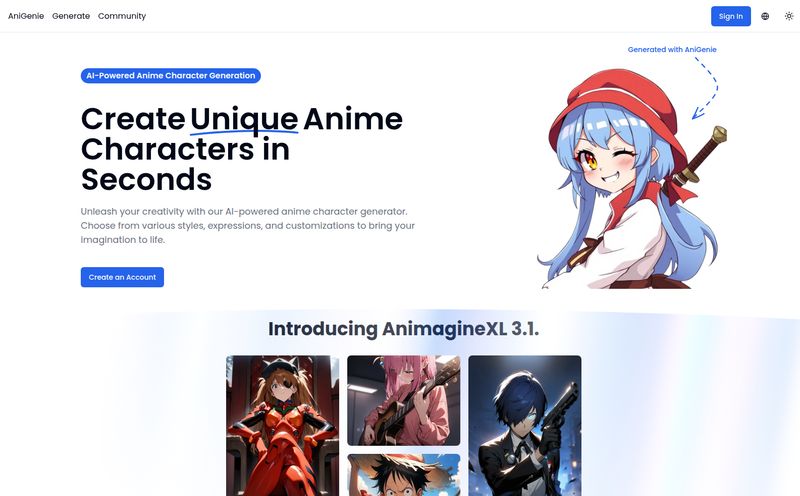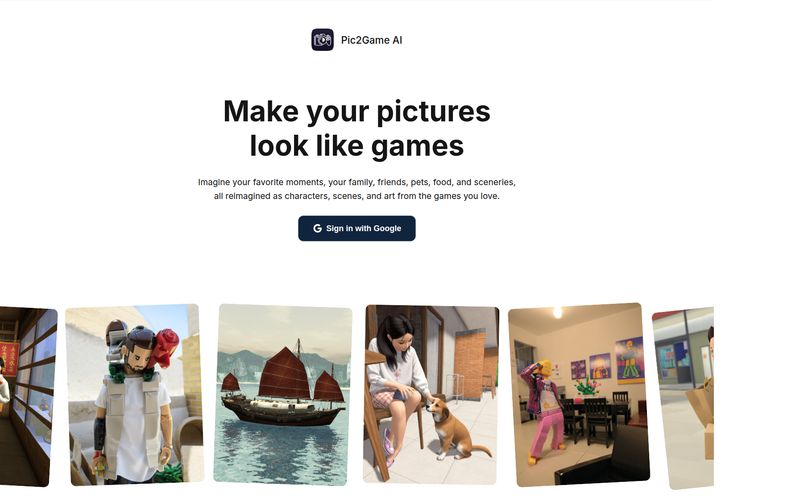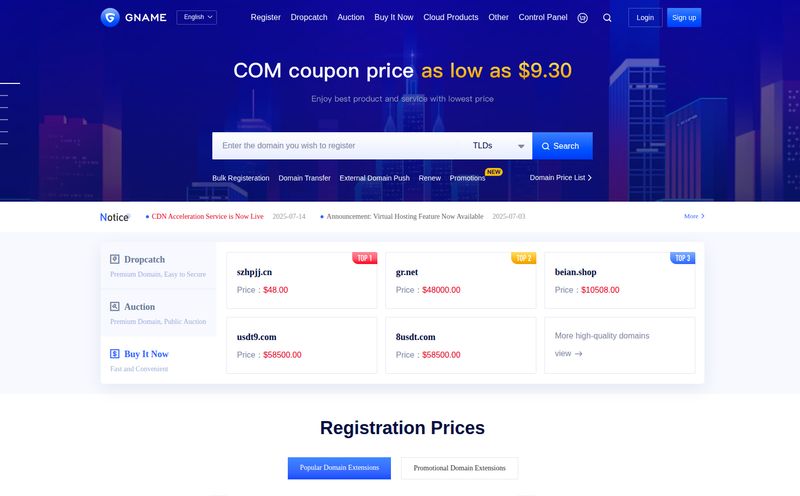You’ve seen them. Popping up on your Instagram feed, sitting proudly on LinkedIn profiles, and staring back at you from X (still feels weird saying that, doesn't it?). I’m talking about those slick, 3D, almost-Pixar-like avatars. You know, the ones where a little cartoon version of someone is sitting casually next to a giant social media logo. It's a trend, and like any good trend in the SEO and digital marketing world, my first thought was: how do I get in on this, and can I do it for free?
For a while, I figured it was some complex prompt-fu mastered by a few AI wizards on Midjourney or a paid app I hadn't heard of yet. But then I stumbled across a tool that promised to do exactly this, for free. It’s called FusionArt AI. And my professional curiosity… well, it got the better of me. Is it just another gimmick, or is it the real deal for leveling up your online presence?
So, What is FusionArt AI, Really?
At first glance, you might think FusionArt AI is just another photo filter app. Upload a selfie, get a cartoon version back. Simple. But that’s not quite what’s happening under the hood. It’s actually way more interesting.
Instead of just applying a style to your existing picture, FusionArt AI uses the powerhouse that is DALL-E 3—OpenAI’s latest and greatest image generation model. Here’s the process, and it's kind of brilliant: you upload a photo of yourself. The AI doesn’t ‘draw over’ your photo. Instead, it looks at your photo, analyzes it to understand your features, and then writes a descriptive text prompt based on what it sees. Then, it feeds that prompt into DALL-E 3 to generate a brand new image from scratch. It's less like putting a filter on your photo and more like giving a detailed description of yourself to a very talented, very literal, and slightly caffeinated 3D artist who then creates a custom scene for you.
The result is a unique piece of art that’s inspired by you, set in that trendy social media context. That’s a pretty clever approach, I have to admit.

Visit FusionArt AI
My First Spin with FusionArt AI
Of course, I had to take it for a test drive. The homepage is clean, no-nonsense. A big box to upload your photo, icons for the different social platforms you can feature, and a text box. It's almost suspiciously simple in an age of cluttered interfaces and sign-up walls.
The Simplicity is the Point
I grabbed a recent headshot—decent lighting, clear features, nothing too crazy. I uploaded it, selected the Instagram logo, and typed my username into the little box. The tool automatically generated a descriptive prompt for me. It was something along the lines of “Create a vibrant 3D scene with a man with brown hair and glasses sitting casually beside the Instagram logo…” It was a solid, descriptive prompt. You can even edit this prompt if you’re feeling adventurous, but for my first go, I decided to trust the process.
The Big Reveal and The Big Caveat
I hit “Generate,” and a little progress bar appeared. A moment later, there it was. A 3D version of… well, a guy who looked vaguely like me, sitting in a stylized world next to a glowing Instagram icon. The quality was genuinely impressive. The lighting, the textures, the “toyetic” feel—it screamed DALL-E 3 quality. It wasn’t a perfect 1:1 match of me, but it captured the essence. My digital doppelgänger was born.
But here comes the catch. And it’s a big one. Printed in red text at the bottom of the page: “Maximum 1 try per day due to high demand.”
One. Try. Per. Day.
My jaw dropped a little. In the world of AI generation, where you often need to run a prompt 5, 10, or 20 times to get the perfect result, this felt like being handed a single golden ticket. It adds a certain high-stakes thrill to the whole thing, but also a dose of potential frustration.
The Good, The Bad, and The AI-Ugly
So, after my one-shot experiment, I sat back and weighed the experience. Like any tool, especially a free one, it’s a mixed bag. But the good stuff is really good.
What I Loved (The Upside)
First and foremost, it's free. Completely, totally, 100% free. In a world where every AI tool seems to have a convoluted credit system or a three-tiered subscription model, that’s a breath of fresh air. You don't even have to log in. The easy interface is another huge plus. There's no learning curve. If you can upload a photo to Facebook, you can use FusionArt AI. And the fact that it leverages the power of DALL-E 3 means you're getting access to some of the most advanced AI image tech on the market without paying OpenAI's fees or wrestling with APIs. That’s a massive win for the average user.
Where It Gets a Little Tricky (The Downsides)
That one-try-per-day limit is the elephant in the room. I get it. DALL-E 3 processing is expensive, and they’re offering this for free. It’s a necessary evil to prevent the servers from melting. But if your first generation is a dud—and let's be honest, with AI that happens—you’re out of luck until tomorrow. Another quirk is that the images are automatically deleted after an hour. This is great for privacy (they state they don't save your images), but it's terrible if you get distracted and forget to download your masterpiece. You’ll come back to a sad, empty space where your avatar used to be. The combination of “you might need a few tries” and “you only get one try” is a bit of a paradox, and it’s the tool’s main weakness.
The DALL-E 3 Connection is a Big Deal
I want to pause on this for a second because as someone who follows the AI space, seeing “Powered by DALL-E 3” immediately tells me something about the quality. We all remember the AI avatar craze from a couple years back with apps like Lensa AI. Those were cool, but they were mostly style-transfer models. DALL-E 3 is a different beast entirely. Its ability to understand natural language and compose complex scenes with a high degree of coherence is, frankly, astounding. It understands concepts like lighting, object interaction (“sitting beside the logo”), and artistic styles in a way older models just couldn’t. This is why the FusionArt AI images have that clean, polished, and intentional look, rather than a smeared, painterly, or artifact-heavy feel. You're getting top-tier generation, not just a fancy filter.
Who is This Tool Actually For?
This isn't a tool for professional digital artists who need granular control over every pixel. They’ll stick to their custom-built workflows in Midjourney or Stable Diffusion. No, FusionArt AI has a very specific and brilliant target audience: the everyday social media user, the content creator, the marketer, the streamer, or the professional who wants to quickly and easily create a trendy, high-quality profile picture without any cost or technical skill. It's for anyone who saw one of these 3D avatars and thought, “I want one of those.” It democratizes a very specific, very current aesthetic. It’s a one-click solution for a viral trend, and there’s a huge market for that.
How Does it Compare to Other Avatar Makers?
Compared to something like Picrew, which is great for 2D anime-style avatars, FusionArt offers a completely different 3D, corporate-but-fun aesthetic. Compared to paid apps, well, it's free. Its main differentiator is its specific purpose. It’s not trying to be an all-in-one AI art generator. It does one thing: create 3D social media profile scenes. And by focusing on that niche, it excels. It's streamlined for a single purpose, which makes it faster and easier to use than more complex, general-purpose tools if that one purpose is what you need.
Frequently Asked Questions about FusionArt AI
Is FusionArt AI really free to use?
Yes, as of this writing, it's completely free to use. The catch is the limitation of one generation per user per day to manage server costs and demand.
Why can I only generate one image per day?
Running AI models like DALL-E 3 is computationally intensive and costs money. The daily limit is likely in place to keep the service free for everyone by preventing a small number of users from overwhelming the system. It’s a trade-off for not having to pay.
What happens to my photo after I upload it?
According to the site, your uploaded photos are analyzed to create a text prompt and then discarded. The generated avatars are also deleted after one hour. This is a strong privacy-focused approach, as they don't appear to be storing your personal images.
What is DALL-E 3 and why does it matter?
DALL-E 3 is the latest image generation model from OpenAI, the company behind ChatGPT. It’s known for its incredible ability to understand detailed text prompts and create high-quality, coherent images. Using DALL-E 3 means the avatars from FusionArt AI are generally more detailed and visually impressive than those from older AI technologies.
Can I use the generated avatar for commercial purposes?
This is a tricky one. Generally, images created with DALL-E 3 can be used for commercial purposes according to OpenAI's usage policies. However, you should always double-check the terms of service on the FusionArt AI website itself to be sure. When in doubt, it’s best for personal profile use.
My avatar didn’t look like me, what gives?
Remember, the tool generates a new image from a description of your photo; it doesn't edit the photo itself. It's creating an artistic interpretation. Factors like the quality of your uploaded photo, the lighting, and the inherent randomness of AI can lead to varied results. Unfortunately, with the one-try limit, you can't easily tweak it until the next day.
Final Thoughts: A Fun Toy or a Genuinely Useful Tool?
So, what’s the verdict? I came in skeptical, and I’m walking away pleasantly surprised. FusionArt AI isn't going to change the world, but it’s not trying to. It’s a fantastic example of a tool that does one thing incredibly well. It’s a fun, accessible, and—most importantly—free entry point into the world of high-quality AI image generation.
The limitations are real, and that one-try-a-day rule can be a bit of a nail-biter. But for the price of zero dollars and about two minutes of your time, you get a chance to create a genuinely cool, trendy, and professional-looking 3D avatar. It’s a perfect little tool for spicing up your online identity. I’ll definitely be trying my luck again tomorrow.



